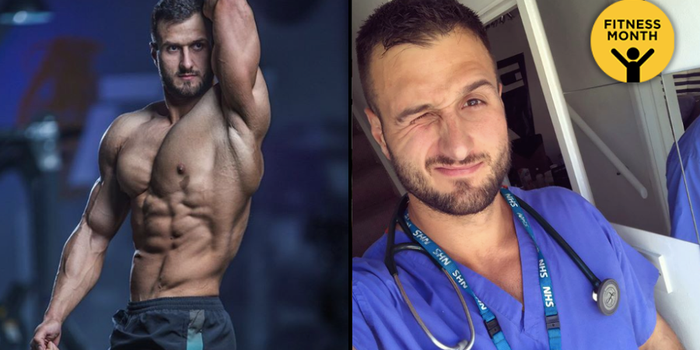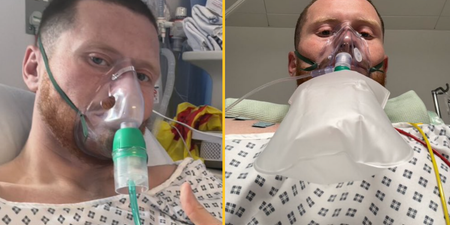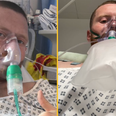In the pursuit of a better body, an ever-increasing number of men are nowadays settling on steroids
It is estimated that over one million British guys are now using performance-enhancing drugs – for the primary purpose of improving body image. The risks are alarming and pose a real danger to your long-term health and longevity. In addition to this, steroid use impacts on your personal and social life, while affecting your mood and mental health.
To help you build muscle the safe way, JOE spoke to Dr. Emil Hodzovic, himself a competitive bodybuilder and doctor with Medichecks.
JOE: What are the real risks of taking steroids?
Dr. Emil: “Steroids and IPEDs are drugs and have detrimental side-effects as well as the obvious desirables.
“The issue with IPEDs is that, as the desired effects increase, so do the side-effects. As people pursue ‘more’ muscle and less fat then the negative effects start to multiply.
“Some side effects manifest in the short term including male pattern baldness, acne and mood swings, but a lot of them may take years before they become an issue, such as long-term heart and liver problems.”
IPEDs are image and performance enhancing drugs that include steroids, fat burners and a whole host of other hormones
Why do so many British guys start taking steroids?
“Muscle gain is a process that takes years of consistent effort and it can be rapidly accelerated through the use of IPEDs.
“In our age of instant gratification, steroid use is seen as the equivalent, especially as the lack of information surrounding IPED use may make it seem like a safe thing to do.
“The media (and social media) also have a part to play in that they push an image of what a man should look like and guys can be bombarded by this all day, every day.
“Therefore, it is unsurprising that we want to look that way and immediately so (or at least for Ibiza in six weeks). Take reality TV shows such as Love Island, that play host to a team of muscular contestants.
“There is always constant pressure to look in shape and perfectly-toned.”
How should training, diet and recovery plans be informed?
“When it comes to establishing a training and diet plan, it’s a case of finding trusted sources of information from those with experience in the area.
“If quick fixes such as magic bullets or six-week transformations seem too good to be true, they probably are.
“Paying a coach is certainly a more direct way to distil knowledge and waste less time, but there are a lot of misinformed or unqualified coaches out there, and people doing it for the wrong reasons.
“In short, do your research and don’t be afraid to ask questions.”
How can you track your muscle gain and find out whether you’re overtraining?
“The best way to track muscle gain is by progress in the gym. This can either be through strength gain over weeks and months or by ‘doing more’ over time.
“The basic principle of muscle gain is progressive overload – by tracking the amount you are lifting in each session, you can track progress.
“Using body weight or mirror pictures can be disheartening in the short term as natural muscle growth takes so long you often won’t see significant changes week to week.”
What are the health markers guys need to keep an eye on?
“If you are getting injured, feeling tired all the time, plateauing in the gym and not enjoying it any more then these are all signs of possible overtraining.
“Medichecks has a range of blood tests called the Sports & Performance tests which can help you keep an eye on overtraining.
“For muscle growth and gym performance in men, testosterone is the key hormone – especially if there are symptoms of possible deficiencies such as fatigue, low mood and low libido. From a supplementation and nutrition perspective, it’s worth looking at vitamin and mineral levels, in particular iron and Vitamin D.”
How can you get ripped naturally?
“Compound movements such as the bench press, barbell rows, deadlifts and pull-ups amongst others should be the base of all workouts and will help you build muscle naturally and safely.
“Regarding training splits, it will depend on how many days a week you can work out – training each muscle twice a week is a good rule of thumb.
“As an example, for three days a week training some sort of full body split works well. An upper/lower/upper/lower split also works well for 4 days a week training.”
What is your advice for fending off the anxieties that male body image can perpetuate?
“Spend time outside of the gym environment and with non-gym going friends and family.
“Avoid social media first thing in the morning and avoid accounts that don’t provide value to you or evoke negative emotions.
“Looking at a timeline full of rippling (and hugely curated and filtered) abs every morning is probably not an ideal way to start your day. Find the balance between following accounts which offer motivation and those which affect your self-esteem.
“Also, realise that most people don’t look like their social media most of the time and they very likely have stresses and anxieties about body image as well (myself included).
“Finally, if you focus on your progress and getting in-tune with your inner health, naturally those body image insecurities should fade.
“Looking after yourself from the inside out will be the most rewarding achievement physically and mentally.”
For more on building muscle naturally, read our three-step guide on accelerating arm growth
























































